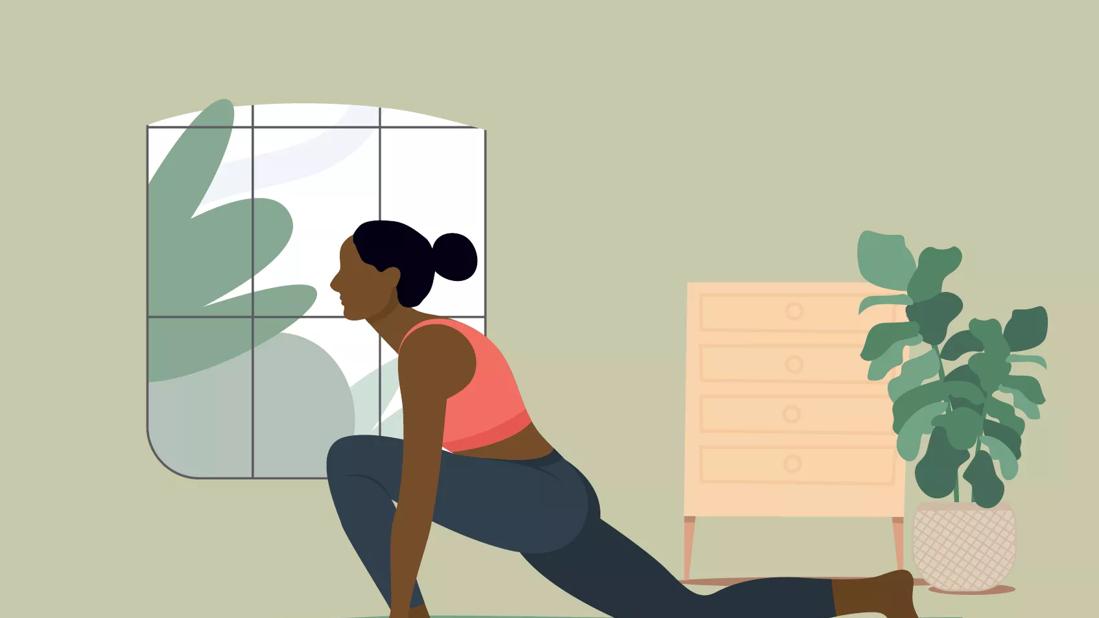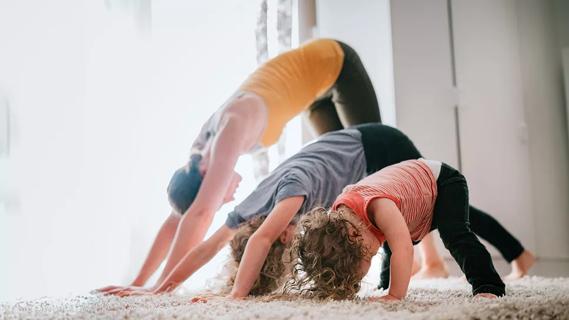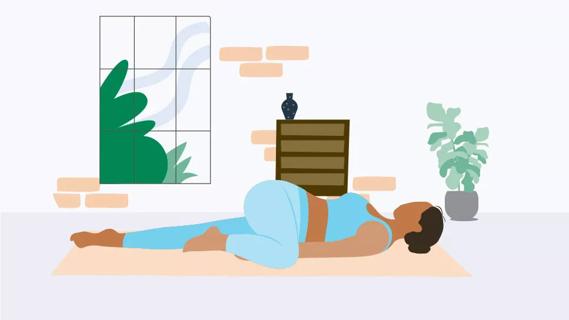Find out how they can help at any level

In yoga, the number of asanas, or poses, can seem endless. While there are 84 basic poses, some believe that the total number can be in the millions, given all of the styles of yoga and variations.
Advertisement
Cleveland Clinic is a non-profit academic medical center. Advertising on our site helps support our mission. We do not endorse non-Cleveland Clinic products or services. Policy
Whether you’re new to yoga, or you’ve been practicing for years, keep in mind that the goal is not to nail every pose like an Olympic gymnast. Instead, it’s all about expressing yourself in ways that won’t lead to injury.
Yoga therapist Paula Brown, C-IAYT, E-RYT 500, offers some tips for how you can make yoga poses more accessible, and explains how that can make your practice much stronger overall.
“Yoga is an ancient tradition. Pictures generally show the ultimate version of what yoga poses look like. Some poses are very, very difficult and can take years to build up to,” says Brown. When you modify a yoga pose, she says you’re taking it and bringing it back to your level of competence or achievement.
“I like to refer to a modification as an ‘option’ because sometimes when people hear the word ‘modification,’ they may feel like it implies that they can’t do a pose. But honestly, if you understand the purpose of the pose, you have the option to do it in a way that’s comfortable for you,” Brown says.
Well, if you get into a pose and you experience pain, that’s your first indication.
“If you’re in a pose and it feels a little bit uncomfortable or tight because maybe you’re trying to stretch, that’s OK. However, if something hurts, then you need to stop doing it. Don’t think that you can push past that point. If it hurts, then you don’t want to keep going. You want to modify that pose,” Brown advises.
Advertisement
Let’s go back to those uncomfortable feelings. When you’re stretching, know that it takes time for your muscles to relax and get longer. Breathing plays a huge part in the process.
“If you push as far as you can right away, your muscles are going to tighten up, which is the opposite of what you want. It takes about eight seconds for the muscles to even realize what you’re trying to do,” explains Brown.
“When you’re stretching, start very minimal and gradually go deeper. You also want to breathe. There are two parts to your breath — inhalation and exhalation. The exhale is the releasing part, the relaxing part of your breath. So focus on that exhale and just go a little bit further.”
Whether you’re in a class or doing yoga at home, don’t be afraid to use props. So, grab a chair, some blocks, a blanket and a bolster/pillow before you start your practice. They can make poses more accessible for you. Here are some examples.
Tree pose, or vrikshasana, requires a great deal of balance. In this yoga pose, one leg remains rooted like the trunk of a tree. Traditionally, you put your hands on your hips and then lift your other leg. Place the sole of your foot either on your inner thigh or inner shin. (Don’t put the sole near or on your knee.) Once you have your balance, you can press your palms together and hold them close to your heart (like prayer hands) or, you can raise your arms to the sky like the branches of a tree.
If you want to work on improving your balance, use a chair as a prop until you’re more comfortable standing on one leg.
“Anytime you’re doing a balancing pose, have a chair next to you. Let’s say you’re doing tree and you feel like you’re going to fall out of the pose. If you hold on to the chair until you feel centered and then let go, your body naturally learns to right itself,” says Brown.
Also, you don’t have to lift your leg high if it doesn’t feel comfortable or it throws your balance off more. To begin, just place your heel above your ankle and keep your toes on the floor. If you feel pretty steady, you can try moving your foot higher.
Pigeon pose, or kapotasana, can be quite intense, particularly if you have very tight hips or hamstrings. The purpose of pigeon is to open your hips. This pose involves having one leg bent in front of you with your shin parallel to the front of your mat while your other leg is extended behind you. In this pose, keep in mind that both hips should be on the mat.
You can always place a blanket under your hips for more stability. Brown says that you can change up the position of your legs to make pigeon pose more comfortable.
“To get the point of pigeon, both hips should be down on the mat. Most people can’t get their hips down so they’re holding most of their weight in their arms — and missing the whole purpose of the pose. So instead of having that back leg straight behind you in pigeon, bring the back knee forward so your legs are in a zigzag formation. Push the hips forward and you’ll still get the stretch in the front of your hip,” Brown explains.
Advertisement
With poses that require you to bend down laterally toward the floor like triangle pose, or trikonasana, and half moon, or ardha chandrasana, Brown suggests using blocks.
“Anything that involves coming down laterally towards the floor, use a block as opposed to angling your body,” she says. “If you angle your body and try to touch the floor with your hand, you have lost the purpose of doing the pose — that lateral motion. By placing your hand on a block, you get the benefit of the pose and you have added support under your front hand.”
Yoga is like a marathon, not a sprint. Brown notes that it can take years to master a pose. So, take your time, don’t force your body into uncomfortable positions and use yoga props every chance you get.
“Yoga meets you where you are. People say that, but what does it mean? It means whatever level you’re at right now, you can do yoga,” encourages Brown.
“If you’re not standing on your head at all, it’s totally fine. Maybe you can bring your head down below your heart level and get the same benefit. Whatever option you choose, yoga is still a beautiful expression and it should be done at your level of comfort. That’s what matters the most,” says Brown.
Advertisement
Learn more about our editorial process.
Advertisement

This gentle yoga stretch supports your spine, strengthens your core and calms your mind

Focus on inhaling and exhaling through 12 steps of a complete sequence

Stand tall and feel grounded with this foundational yoga pose

This transitional and restorative yoga pose provides a full-body stretch

Somatic yoga focuses on the sensation and experience of movement — not striking perfect poses

Balasana, or child’s pose, is a restorative full-body yoga technique

Kids’ yoga can help kiddos become more aware of their physical, mental and emotional selves

This mindful practice is designed to give you mental and physical relaxation

Start having sex about 72 hours before ovulation, then at least every other day during your fertile window

Attachment theory suggests that your earliest relationships shape connections throughout your life

It isn’t a recognized mental health disorder, but research shows that problematic social media use can negatively affect your mental health, self-esteem and sleep